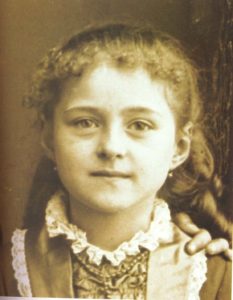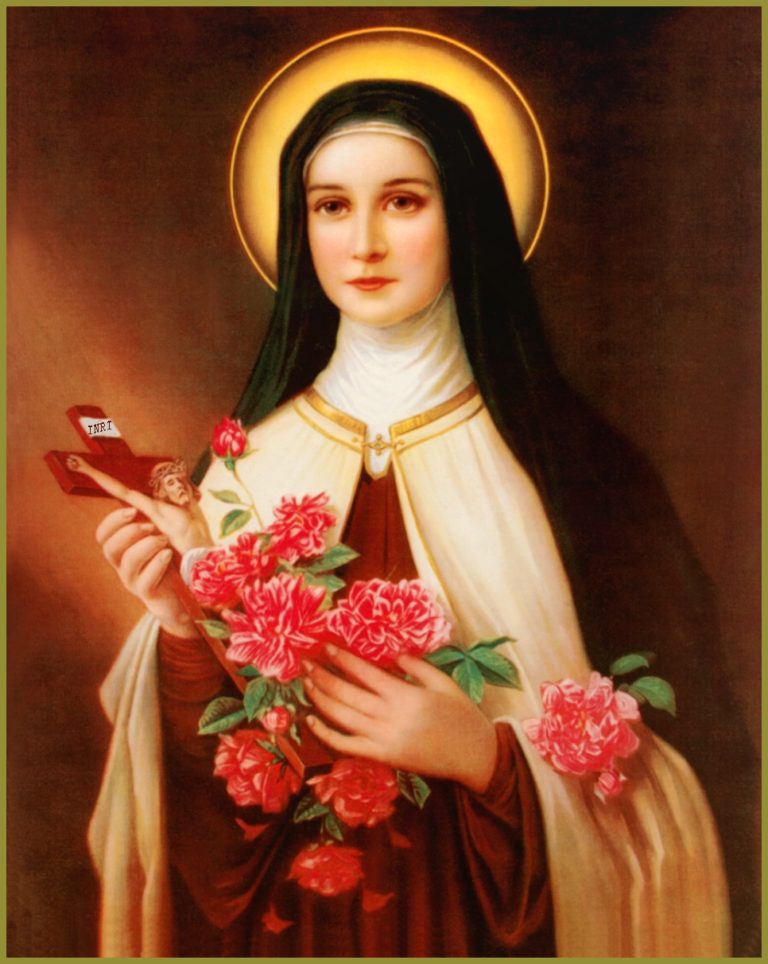091-471-2724001
chancellortrivandrum@gmail.com
Born at Alençon, France on January 2, 1873
Died at Lisieux, France on September 30, 1897
Canonized by Pope Pius XI 1925
 Saint Theresa of the Child Jesus, one of the most instantly popular saints of the twentieth century, was canonized less than thirty years after her death at the age of twenty-four.
Saint Theresa of the Child Jesus, one of the most instantly popular saints of the twentieth century, was canonized less than thirty years after her death at the age of twenty-four.
A principle reason for her great appeal to ordinary Catholics was her “Little Way” to holiness — her example of achieving sanctity, not through undertaking great deeds, but through personal devotion and dedication. The young nun’s autobiography, L’histoire d’une âme (Story of a Soul), written at the command of her prioress, was much admired for its deep spiritual wisdom and beauty. The book presented people with a compelling example of spiritual maturity and piety achieved by an ordinary young girl. An anecdote, that she had promised to send roses as a sign of her intercession led to the affectionate nickname, the “Little Flower“. Her shrine at Lisieux, France, is still one of the most popular pilgrimage sites in Europe.
 Thérèsa was born in Alençon on January 2, 1873 to Louis Martin and Azélie-Marie Guérin. When Thérèsa was only four, her mother died, and so her father moved the family to Lisieux, where the five children were watched by their aunt. An older sister, Mary, ran the household and the eldest, Pauline, made herself responsible for the religious upbringing of her sisters.
Thérèsa was born in Alençon on January 2, 1873 to Louis Martin and Azélie-Marie Guérin. When Thérèsa was only four, her mother died, and so her father moved the family to Lisieux, where the five children were watched by their aunt. An older sister, Mary, ran the household and the eldest, Pauline, made herself responsible for the religious upbringing of her sisters.
Pauline later entered the Carmel, an order of contemplative nuns, at Lisieux and Thérèsa began to be drawn in the same direction. When Thérèsa was fourteen another sister joined Pauline in the Carmel. During the following year Thérèsa told her father of her wish to become a Carmelite, and he agreed; but both the Carmelite authorities and the bishop of Bayeux refused to hear of it because of her young age. A few months later she was in Rome with her father and a French pilgrimage. At the public audience, when her turn came to kneel for the Pope Leo XIII’s blessing, Thérèse broke the rule of silence on such occasions and asked him, “in honor of your jubilee, allow me to enter Carmel at fifteen”. Pope Leo was clearly impressed by the young girl, but he upheld the decision of the immediate superiors. At the end of the year the bishop gave his permission, and in 1888 Thérèsa entered the Carmel at Lisieux, taking the name of Theresa of the Child Jesus.
 One of the principal duties of a Carmelite nun is to pray for priests, a duty that Sister Theresa performed with fervor. Although she was physically frail she carried out all the practices of the austere Carmelite rule. Yet, photographs taken by her sister within the cloister show Sister Theresa in high spirits in the costume of Joan of Arc for a drama the nuns staged, working happily in the kitchen with other nuns, and in the familiar portrait (above).
One of the principal duties of a Carmelite nun is to pray for priests, a duty that Sister Theresa performed with fervor. Although she was physically frail she carried out all the practices of the austere Carmelite rule. Yet, photographs taken by her sister within the cloister show Sister Theresa in high spirits in the costume of Joan of Arc for a drama the nuns staged, working happily in the kitchen with other nuns, and in the familiar portrait (above).
In 1893 Sister Theresa was appointed to assist the novice mistress. In 1894 her father died, and soon after her sister Céline, who had been looking after him, becoming the fourth Martin sister to enter the Lisieux Carmel. Eighteen months later, Sister Theresa heard, “as it was, a far-off murmur announcing the coming of the Bridegroom”: it was a hemorrhage at the mouth from tuberculosis. Although she had hoped to serve as a missionary, her disease advanced, and the last eighteen months of her life was a time of physical suffering and spiritual trials.
In June 1897 she was removed to the infirmary of the convent where she died on September 30. She was beatified by Pope Pius XI in 1923. He canonized her in 1925. In 1927 she was named the heavenly patroness of all foreign missions, and of all works for Russia.
Source: Butler’s Lives of the Saints Concise Edition. San Francisco: Harper & Row Publishers, 1985. Some of the Suggested Websites
www.ewtn.com/therese/therese.htm
www.thelittleflower.org/
The Flower
All the earth with snow is covered,
Everywhere the white frosts reign;
Winter and his gloomy courtiers
Hold their court on earth again.
But for you has bloomed the Flower
Of the fields, Who comes to earth
From the fatherland of heaven,
Where eternal spring has birth.
Near the Rose of Christmas, Sister!
In the lowly grasses hide,And be like the humble flowerets, —
Of heaven’s King the lowly bride!